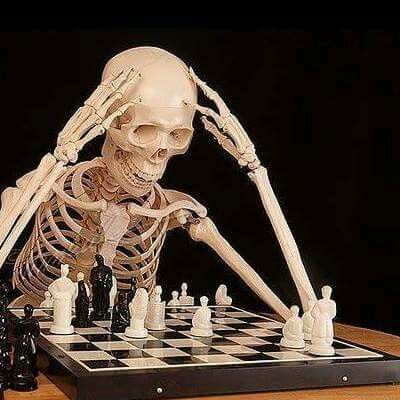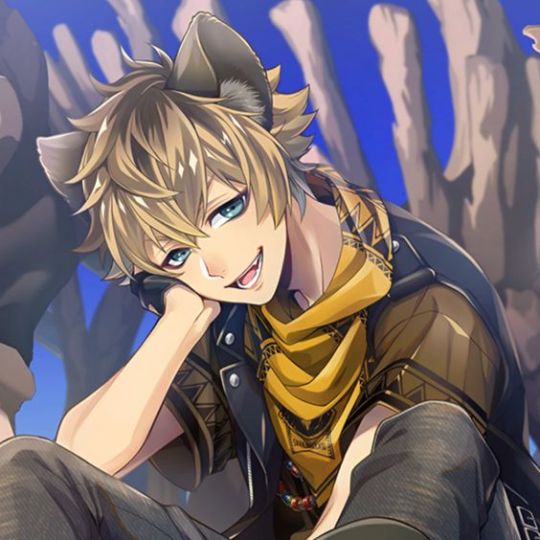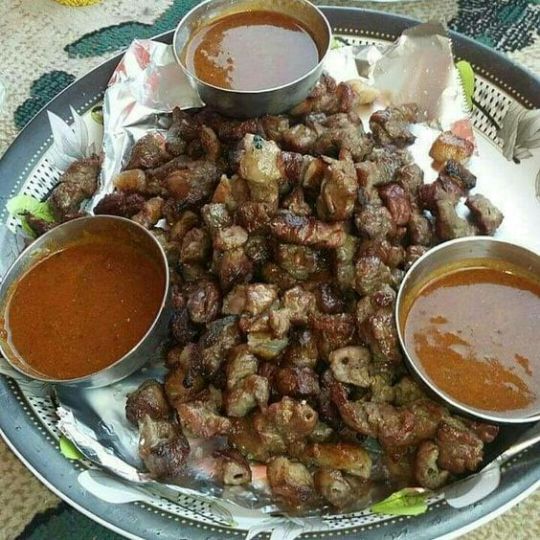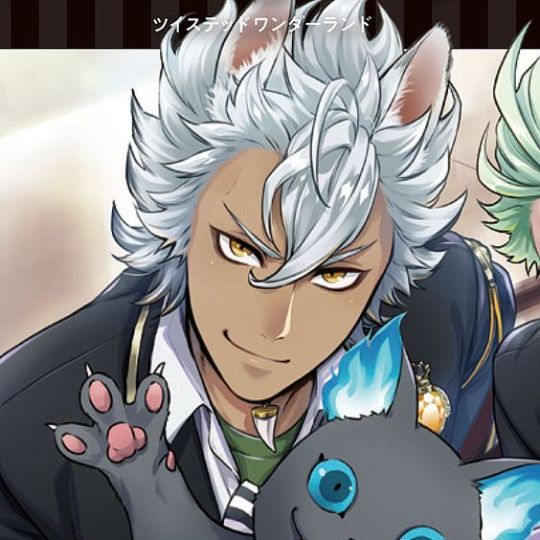#Ugandan Rap
Explore tagged Tumblr posts
Text

#ripaka #SouthAfrica
#AKA#Rap Nation Entertainment Africa#Rap Nation Entertainment Africa News#Dyce Official#Uganda#Ugandan Rap#Ugandan Music
0 notes
Text
Ancient Astronauts – Cypher Kabaka (2024)

Yari looks at Cypher Kabaka, the collaborative album between German hip hop group Ancient Astronauts and Ugandan artist collective BA Cypher Kabaka, released June 27th, 2024, on Switchstance Recordings.
This latest release by Ancient Astronauts, a hip hop group from Germany, is a collab with BA Cypher Kabaka, a diverse collective of MCs, graffiti artists, DJs and breakdancers representing a variety of indigenous cultures of Uganda. The mic skills on display here are excellent, and across the album each MC brings something a little different to the table. Ancient Astronauts have knocked it out of the park with this album, and I know I’ll be continuing to listen to this one well into the future. Read the full review and listen to the album at the link below:
#hip hop#underground hip hop#indigenous artist#african music#ugandan music#reggae#rap#MC#cave dweller music#experimental hip hop
3 notes
·
View notes
Text
Vulnerable Album | Nutty Neithan, XYDAN Drop 3rd Music Album
At midnight on February 8, 2025 (EAT), XYDAN gave the world his most personal and authentic project to date—the Vulnerable album. Packed with raw emotion, unfiltered truths, and captivating melodies, this release is a bold testament to an artist who isn’t afraid to wear his heart on his sleeve. A Deep Dive into Vulnerability In a candid conversation about the project, XYDAN described Vulnerable…
0 notes
Text
TWISTED CHARACTERS AND THE MUSIC I THINK THEY'D LIKE! (savanaclaw ver.)

the part two i promised for no one specifically. i'm mainly doing every dorm because i want to -isa<3




LEONA KINGSCHOLAR
I actually think Leona would listen to music fairly frequently. He's a rich kid, I def headcanon he got one of them expensive ass sports cars and probably speeds on the highway blasting music, pissing off literally everyone else tryna drive home from work. His music taste would be surprisingly diverse, too. He'd probably like a mix of 2000s rnb which includes like Rihanna, Ne-Yo, AALIYAH SO OBVIOUSLY, Akon, and he'd be a (not obsessive) Beyonce stan. He'd listen to NYC and UK drill, and since I headcanon Sunset Savanna to be an East African inspired nation, he'd probably have some Kenyan/Tanzanian/Ugandan/Rwandan artists on his playlist too (since those countries are where Swahili is spoken widely.) I don't have any artists to name but if yall know some put me on.




RUGGIE BUCCHI
Ruggie, similar to Leona would have diverse music taste. Probably grew up surrounded by music, listening to whatever was on the radio while cooking sum for his grandmother, and now he uses one of Leona's ten credit cards to pay for his Spotify premium. He def listens to albums when he's chilling on his bed, studying/trying to unwind after a long day of running around. Though he grew up on similar traditional East African music, his favorite genres (IN MY OPINION) would be alternative hip hop and indie music. He LOVESSSSS Kanye West (tcd to yeezus), Tyler the Creator (and honestly all of OFWGKTA), Gorillaz, Childish Gambino, Vampire Weekend, and early alternative hip hop artists like the Beastie Boys, A Tribe Called Quest, Cypress Hill, etc. He was also probably put onto Britpop through Gorillaz, and likes Blur, Oasis, and (it's a secret tho) he fucks with Radiohead's "ok computer" album.




JACK HOWL
Jack is a canon gym rat. we already know he listens to music like HELL while he's bench pressing and doing pushups. I think he'd have similar music taste to Ruggie, excluding the "indie" part. (and he probably uses apple music, too.) Jack enjoys alternative hip-hop, and west coast hip-hop. He'd like Kanye and some of Tyler's popular songs, but he'd REALLY enjoy early 90s west coast rap like N.W.A, Dr. Dre. 2PAC ESPECIALLY, KENDRICK LAMAR ESPECIALLY. His favorite album is probably good kid maad city.

period -isa<3
#disney twst#twisted wonderland#leona kingscholar#ruggie bucchi#jack howl#savanaclaw#headcanons#twst headcanons#twst imagines#twst disney#leona kingscholar x reader#ruggie bucchi x reader#jack howl x reader
162 notes
·
View notes
Video
youtube
Yao Bobby & Simon Grab Live at Nyege Nyege Festival 2022
Yao Bobby x Simon Grab Live at Nyege Nyege Festival September 2022 Mad vibes and full energy at the Darkstar stage of the Nyege Nyege Festival in September 2022 with the togolese-swiss duo Yao Bobby x Simon Grab. Placed in the middle of the crowd their intense experimental rap and noise show turns into a magic moment, like a ugandan answer to an industrial warehouse rave, but in a beautiful scenery in the middle of the woods within a wicked installation of hanging mushroom
25 notes
·
View notes
Text
NIGERIAN PRINCE OF AFROPOP OXLADE RELEASES TRAILBLAZING DEBUT ALBUM “OXLADE FROM AFRICA”

Today,Nigerian superstar Oxlade continues his hot streak by officially releasing his anticipated debut album, Oxlade From Africa, via Epic/Sony Music France. Listen to the album here.
Blending his past, present, and future into an all-encompassing vision, Oxlade From Africa is a bold and expansive 16-track musical and cultural journey that transcends borders, celebrating African heritage from Lagos to the world. With its title reflecting a broad, inclusive vision, the album highlights Africa’s cultures, elegance, and beauty, marking the next step in the Lagos-based artist's rise, showcasing his journey from breakout success to mainstream recognition.
Aiming to continue making Africans proud of their heritage, Oxlade uses his music, visuals and fashion to deliver a powerful message of unity, and is continuing the momentum from his massive global hit ‘Ku Lo Sa’, which has 574 million streams and was certified GOLD by the RIAA this week, and Double Platinum in Canada. The project is also home to recent singles ’Intoxycated’ ft. Dave, both halves of the double ‘KATIGORI/PIANO’ release, ‘Arabambi’ and most recent offering ‘IFA’ featuring Congolese superstar Fally Ipupa.
LP opener ‘Interlude’ features Ugandan political activist and musician Bobi Wine who introduces the album with a powerful co-sign and thought-provoking message, setting a powerful tone with an uplifting message of resilience and African spirit. ‘OLAITAN (Olaoluwa)’ which translates to “the wealth, the favor and the grace of God shall never leave you” in Yoruba, see’s Oxlade reflects on his life journey, embracing a mindset of faith and destiny over a warm and feelgood production. ‘Blessed’ features Jamaican Dancehall legend Popcaan and becomes an instant highlight as they share stories of overcoming struggles, highlighting that despite their youth, valuing your self-worth and positivity is key.
2023 summer smash ‘Intoxycated’ continues to ooze star quality alongside London rap king Dave as they showcase their storytelling finesse, delving into a story of love and the intoxicating traits that come with it. Oxlade’s global breakout hit ‘KU LO SA’ follows. Originally a spontaneous decision before his COLORS performance, the songs heartfelt lyrics symbolizes trust in intuition and the power of seizing opportunities, putting his vocal talents front and centre. ‘IFA’ is a sultry love song infused with Coupé-Décalé and Afrobeats rhythms, as Oxlade reassures his love interest that she is his priority, painting vivid images of devotion with cheeky metaphors, whilst Fally Ipupa’s melodic touch further amplifies the song's seductive energy.
‘Ovami’ features High-life legend Flavour and delivers a harmonious blend of love and unity as Oxlade taps into the rich heritage of High-life music, a sound central to Nigerian culture, making the track a celebration of love in all its forms.Spring single ‘Arabambi’ is the nickname of K1 De Ultimate, an iconic Nigerian Fuji musician and means “the child of the people”, “the community gave birth to this child”, “the one”. The track’s melody, inspired by Miguel’s vocal style, mixes African tradition with modern R&B, creating an irresistible fusion of rhythm, love and pride. ‘Tamuno (Interlude)’ is a spiritual pause in the album, offering a moment of reflection. Named after a deity in Nigerian culture, it serves as a homage to Oxlade’s faith and spiritual journey, laying the groundwork for the more sensual and energetic songs to follow, and ‘ASUNASA (Hold Your Waist)’ featuring Wande Coal offers exactly that. With influences from Wande Coal’s classic ‘So Mi So’, this stylistic offering sees both artists trade risque, Afrocentric verses, merging spiritual undertones with sensual energy to become an instant album highlight.
youtube
The P-Prime produced ‘Piano’ is a heartfelt love song that blends the soft hits of a log-drum, piano and drums with Oxlade's signature falsetto and ad-libs that characterises Oxlade’s effortless ability to create romantic anthems. The Sarkodie featuring ‘Ololufe’ is a tribute to the iconic "Ololufe" by Wande Coal, adding a modern twist with influences from Reggae, Dancehall, and Afrobeats. Sarkodie’s hard-hitting verse complements Oxlade’s smooth vocals, creating a dynamic love song that pays homage to African R&B while setting new standards. ‘RMF’ (Rich Motherf*cker) is a declaration of confidence and self-worth, drawing inspiration from Fela Kuti’s vintage Afrobeat sound as the 27-year-old unapologetically boasts about success, luxury, and the journey that got him here.
‘On My Mind’ (OMM) features TOMi Owo & OJAHBEE dives deep into the emotional rollercoaster of love, becoming an ode to first love as it explores the excitement and nervousness that comes with falling for someone. ‘Katigori’ is Oxlade’s manifesto, written during a time when he had fame but was still striving for success. Closing the album, ‘OFA’ embodies
Oxlade in his ultimate form. Again drawing from Fela Kuti’s Afrobeat and blending it with his Afro-Pop style, this track is the culmination of his journey—his evolution into a fully-realised artist. It's a powerful anthem of self-awareness, confidence, and embracing one’s destiny.
#oxlade#ofa#oxlade from africa#nigerian prince of afropop#prince of afropop#afropop#afrobeats#spotify#youtube#music#artist#musician#soundcloud#culture#art#afrobeat#afro#afrocentric#rap#rapper#nigerian#nigeria#african#african art#Youtube#Spotify
2 notes
·
View notes
Text


𝐁𝐀𝐒𝐈𝐂𝐒.
FULL NAME: Teddy Akello Hill Jr. NAME MEANING: Teddy is a name of English origin meaning "gift of God or wealthy guardian." Akello means “blessed” in Luganda and is of Ugandan origin. NICKNAME(S): TJ, Teej, Ted AGE: Thirty-four SPECIES: Human GENDER: Cis man (he/him) ORIENTATION: Het OCCUPATION: Horse ranch owner of Hill Horse Ranch BIRTH DATE: 7 July 1988 BIRTHPLACE: Babylon, Texas HOMETOWN: Babylon, Texas ETHNICITY: African-American MARITAL STATUS: Single RELIGION: Agnostic EDUCATION LEVEL: Equine science (BS Animal Sciences) CURRENT LIVING ARRANGEMENTS: At the Hill family house near the horse ranch RAP SHEET: No record
𝐏𝐇𝐘𝐒𝐈𝐂𝐀𝐋 𝐀𝐏𝐏𝐄𝐀𝐑𝐀𝐍𝐂𝐄.
FACECLAIM: Daniel Kaluuya HAIR STYLE: Black, tightly coiled and often styled in a low, close-cropped buzz cut EYE COLOR: Dark brown HEIGHT: 5' 9" / 175 cm BUILD: Fit & toned from his work at the horse ranch STYLE: Usually seen in bright-colored hoodies or shirts and jeans SCENT: A pleasant mixture of hay, leather, and soap VOICE: Deep and velvety, with a hint of gravelly texture USUAL EXPRESSION: Relaxed, unexpressive but with a belying twinkle of amusement in his eyes POSTURE: Straight but not stiff DISTINGUISHING CHARACTERISTICS: Has a slightly uneven gait due to his hips not healing well after being thrown off a horse while trying to break it.
𝐇𝐄𝐀𝐋𝐓𝐇 & 𝐋𝐈𝐅𝐄𝐒𝐓𝐘𝐋𝐄.
DRUG USE: Never ALCOHOL USE: Moderate SMOKING: Every once in a while
𝐏𝐄𝐑𝐒𝐎𝐍𝐀𝐋𝐈𝐓𝐘.
TROPES: The Cowboy / Lone Ranch Owner / Ancestral Name / Lineage Comes from the Father POSITIVE TRAITS: Gentle, resilient, trustworthy, sensible NEGATIVE TRAITS: Passive, reserved, obstinate, self-deprecating MORAL ALIGNMENT: Neutral ZODIAC SIGNS: Cancer sun, Taurus moon, Aquarius rising THEME SONG: A Horse with No Name by America
𝐁𝐀𝐂𝐊𝐆𝐑𝐎𝐔𝐍𝐃.
His father’s ancestors moved to Babylon, Texas from New Mexico after the Civil War, and have seen through most of the ups and downs of the town. They had numerous opportunities to leave the godforsaken town, but something seems to bind the Hills to the place. Perhaps it was one of the few places in the South that gave them a chance and they’re eternally grateful for it. Or perhaps they are just loyal. For whatever reason they stuck it out for so long, it is undeniable that the Hills are considered to be staples amongst the community, mildly contributing to the economy with their equine business. It isn’t what is exactly called a flourishing business (as it used to be), but it puts food on the table. The Hill Ranch has been around for years, older than most of the town’s citizens.
TJ’s mother, Agatha comes from a long line of witches from Salem, Massachusetts. His parents met after his mother’s family (and in time their coven) moved to Babylon for mysterious reasons. Only his sister* inherited their mother’s powers, as it only gets passed down to women in the family. Agatha eventually took position as leader of the Crystal Coven, retiring around thirty years later. She also owns Foster Health, a pharmacy (and apothecary) located at Pilgrim Square.
TJ is a horse rancher, inheriting both the property and way of life from his father who had recently been declared dead after disappearing 7 years ago. He owns, manages, and operates Hill Horse Ranch in Babylon which is dedicated to breeding, raising, and training horses. He also sells and trades them.
Although TJ has people helping him around the ranch, he is a hands-on owner. Some of his daily responsibilities include feeding and caring for the horses, cleaning stalls and pastures, training and exercising the horses, and working with clients to provide riding lessons or boarding services.
Much like TJ’s horses, he is a Babylonian born and bred. He has only left Babylon once to pursue formal education in equine science. He hasn’t left since coming back to town immediately after graduation.
Due to his family’s long history in Babylon and his mother’s witch origins, he is aware of the supernatural denizens living with them. He doesn’t exactly know who is what unless explicitly revealed to him, and he generally feels better off not knowing. He believes his father might’ve gotten mixed up in something supernatural or paranormal, which explains his apparent detachment from the case as he thinks it’ll be impossible for him to go up against something non-human.
Despite its flaws and defects, TJ loves the town and would wish to be buried in its soil. Typical of a Hill.
While he seemingly spends more time with horses than humans, he is still a friendly face around town and gregarious enough. He likes a good chat— or more like enjoys listening to people chat.
*TJ's sister is a wanted connection. If interested, feel free to message me!
𝐇𝐄𝐀𝐃𝐂𝐀𝐍𝐎𝐍𝐒.
TJ's horse ranch and Agatha's pharmacy are submitted locations. You may find more about them here. Agatha (TJ's mom) is also a an active NPC that you may interact with/use in threads.
𝐂𝐑𝐄𝐃𝐈𝐓𝐒.
header quote
2 notes
·
View notes
Text
Government Resettles Over 800 Affected by Tilenga Oil Project
(Kampala) – The Ugandan government reports that over 800 individuals affected by the Tilenga oil project have been successfully resettled as part of the ongoing efforts to manage the impacts of oil extraction activities in the region. According to Beatrice Akori, the Minister in charge of economic monitoring, the resettlement was carried out under the Resettlement Action Plans (RAPs). The…
0 notes
Text
Ghetto Kids lose out in Britain's Got Talent final

Ugandan dance troupe Ghetto Kids missed out on the top three slots at the last stage of Britain’s Got Talent competition on Sunday, thanking fans for their "unwavering support through out the competition". The group of six children are aged between six and 13, and came from impoverished backgrounds in Uganda's capital Kampala before being taken in and cared for by their guardian-turned-manager Dauda Kavuma. Ghetto Kids was among the 10 finalists in the competition – which was won by Viggo Venn, a 33-year-old comedian from Norway. The second place was taken by 13-year-old dancer Lilliana Clifton while magician Cillian O’Connor, 14, came third. The Ugandan group already made history after becoming the first act to be given a "golden buzzer" by one of the judges before they had even finished their performance - which sent them straight to the semi-final. They then received the most public votes, giving them a place at the final alongside nine other contestants. It has added to the group's already considerable fame - the Ghetto Kids already had millions of YouTube views under their belts before joining the UK talent show, and featured in a music video for US-Moroccan rap star French Montana in 2017. Read the full article
0 notes
Photo

Ugandan singer and RnB Pop artist #TracyMelon 🇺🇬coming through with Brand New jam "Teleera" 🎶 #RapNationEntNews What's your opinion abt Ugandan female artists!? 🤔 #rapnationentuganda #RapNationEnt #gainwith_chuv #gainwithwestandmugweru #gainz #gainwithmugweru #facebook #instagood #instagram #IndependentArtist #respect #recordlabel #musicpromos #distributor #RapNationEntWorldwide #RapNationEnt2023 #RapNationEntertainmentAfrica #gainwithpaula (at Rap Nation Entertainment) https://www.instagram.com/p/CrC82hGtE0z/?igshid=NGJjMDIxMWI=
#tracymelon#rapnationentnews#rapnationentuganda#rapnationent#gainwith_chuv#gainwithwestandmugweru#gainz#gainwithmugweru#facebook#instagood#instagram#independentartist#respect#recordlabel#musicpromos#distributor#rapnationentworldwide#rapnationent2023#rapnationentertainmentafrica#gainwithpaula
0 notes
Audio
NEW RELEASE
BLUE FORTY-FOUR: CATARRH NISIN vs. 6V9ID / SWORDMAN KITALA
An absolute gem of a split release from two international MC dons. Swordman Kitala you may be familiar with from his work as part of Kampala collective Nyege Nyege and collaborations with Scotch Rolex (nee DJ Scotch Egg), MC Yallah, Lorenzo BITW and most-recently, Blue Tapes leader Soft-Bodied Humans. Here Kitala delivers three stone-cold bangers. Your Ma Babe is a towering piece of futuristic Ugandan dancehall, We Da Gail A Mad Over is a summer anthem in waiting, and Jangle Fever is probably the closest thing to a Top 40 hit Blue Tapes will ever release. We’ve partnered him here with Catarrh Nisin – one of the deadliest MCs in Japan’s emergent grime scene. This is no basic Bow E3 homage, though. Producer 6v9id casts Nisin’s attitude-laden flow in these amazing sort of blasted dystopiascapes. The result is something altogether new – angry but atmospheric, a swirling debris-cloud where you expect beats and bass. Much to love here for fans of The Bug (or really any of Kevin Martin’s myriad projects), Scorn, or the output of Nyege sublabel Hakuna Kulala. Praise for Swordman Kitala “Stuttering raps and rough edges dodging and weaving around the aural carnage with undeterred force.” – Underscore “This just bangs.” – Super Super Sounds “A formidable, mutant electro, sure-fire hitter.” – Loose Lips
#swordman kitala#catarrh nisin#6v9id#grime#dancehall#industrial#the bug#kevin martin#scorn#nyege nyege#hakuna kulala#experimental music#Illinois#mc yallah
10 notes
·
View notes
Audio
Nilotika Cultural Ensemble - Nyabingi Resurrection - album-length studio recording of Kampala collective
After dropping four advance singles to great acclaim, Switchstance Recordings (Germany) and East African Records (Uganda) are proud to announce the release of the beautiful and historic album: Nyabingi Resurrection. Nyabingi is one of the Mansions of Rastafari, which worships and achieves enlightenment through drumming and righteous living. The Mansion takes its name from the 18th century warrior queen Nyabingi, ruler of an east African kingdom. After being murdered in a royal dispute, a religion formed around her spirit that inspired anti-colonial revolts all over the region. Nyabingi’s followers used intense drumming to terrify the colonial authorities and their collaborators. Her spirit was said to have possessed Queen Muhumusa in the late 19th century, so feared that she was imprisoned for life and a ban on drumming was imposed by the authorities. A century and a half later, the descendants of Nyabingi are still drumming in the same region of East Africa. One of the most notable groups are Nilotika Tugifa, aka Nilotika Cultural Ensemble, led by Jajja Kalanda. The patterns and instruments they use are the same as their Nyabingi ancestors, but they have evolved and developed their technique, notably including Caribbean sounds and styles influenced by the Mansion of Rasta that adopted their name. Like the Rastas, Nilotika’s culture embraces artistic creativity, community values and clean living as an alternative to the corruption and capitalism prevalent in mainstream Ugandan society. Working with Switchstance Recordings, Nilotika have for the first time ever recorded an African Nyabingi drumming session at East African Records studio in Kampala, Uganda. The session was captured over two weeks, using local instruments and the full ensemble of around 15 people, including friends and family. The results are extraordinary, combining ancient rhythms, new technology, chanting, drumming, rapping and virtuoso instrumentalists. This is a unique chapter in the history of African music. The drumming of the followers of warrior Queens Nyabingi and Muhumusa travelled with the trade winds across continents to inspire Rastas in Jamaica to revolt against slavery and neo-imperialism. Now, the musical spirit has been resurrected in its birthplace by Jajja Kalanda and the Nilotika Cultural Ensemble, newly-emboldened by the music of Rastafari to fight Babylon once again. A musical circle has been completed.
#Nilotika Cultural Ensemble#nyabingi#uganda#kampala#african music#2021#switchstance recordings#reggae
8 notes
·
View notes
Text






A student in 1960s U.S., Kofi Annan had traveled to the Jim Crow South. He needed a haircut, but was told by a racist white barber: “I do not cut nigger hair.” Annan, who is Ghanaian, responded: “I am not a nigger, I am an African.” In doing this, Annan did not challenge the degradation pre-assigned to him by virtue of his skin color, and accepted the premise that there is something inherently pathological about American blackness to which black people from Africa are impervious.
This line of thought is not uncommon. As Chimamanda Adichie, herself a Nigerian immigrant to the U.S., has stated: “When you’re an immigrant and you come to this country, it’s very easy to internalize the mainstream ideas. It’s easy, for example, to think, ‘Oh, the ghettos are full of black people because they’re just lazy and they like to live in the ghettos.’”
The evidence put forth by the characters that showed up from America on our living room TV in Tema, in Ghana where I spent my early life, seemed bent on conveying that black people were a problematic sect in the United States. Whether from CNN’s discussion of crime and violence, or in the rap videos buoyed by the twin manifesto of brute force and wealth, this perennial drip feeding meant that even before our plane had taken of from Accra and headed to JFK, I’d be admonished by extended family, pastors, market women and an air hostess – none of whom had lived in America – to not become like “those black people,” the Akata people.
The problem of such marching orders is that in America the definition of blackness – with its complex history – often lies in the eye of the beholder. It is as the truth for many Africans, as the novelist Yaa Gyasi wrote, that “when my little brother had the police called on him by our new neighbors while riding his bike on a nearby lot, he couldn’t say to those officers, ‘It’s O.K., I’m Ghanaian-American’.”
Unlike in Kofi Annan’s (problematic) case, most Africans – particularly poorer immigrants – don’t get a “get out of black free” card in instances of race prejudice. It wasn’t the case when four plainclothes officers shot Amadou Diallo (an immigrant from Guinea in West Africa) 41 times, as he pulled out his wallet in 1999. Seventeen years later we are again suffering with the tasering, shooting and summary killing of Ugandan immigrant, Alfred Olango, in San Diego. What these acts of police violence show is that the desire to self segregate in matters of race prejudice is indulging in a fantasy.
The fantasy may derive from a superiority complex. As Pew research shows, there are more African immigrants with college degrees relative to the overall U.S. population. But respectability or the lack thereof is no reason for someone to die, no matter their race. What matters is that the black immigrant population has grown by 137 percent in the last decade, and forms a relatively larger percentage of the overall U.S. black population. In America these days, Africans are the new blacks. Studies show that by the second generation many black immigrants lose the cadences and other linguistic signs that their parents still maintain. Children leave the tightknit community to go to college, and families in general disperse around the country in search of education and better opportunities, melting into the general black experience in America. Whatever challenges stand in the way of black individuals and families in the U.S.are our prerogatives.




7 notes
·
View notes
Text
Unrequited 1
A new thread of reviews that somehow missed the cut- the music is still mighty fine and the write up is not bad either. Here goes:
Rey Sapienz & The Congo Techno Ensemble- ‘Na Zala Zala’ (Nyege Nyege Tapes/released July 2021)

In case you hadn’t noticed the sound of afrobeat is taking on a new dimension: riding on a surge of youthful energy; absorbing rap’s bite, trap’s bile and electro’s drive; committed to the cutting edge but deeply aware of tradition. ‘Electronicafrica’ is the sound of a new underground busting through the surface with the continent’s East as a focal point and Kampala at the epicentre. You may have caught Don Zilla’s rampant new album beaming out from the Ugandan capital a couple of weeks ago, well now in hot pursuit comes Rey Sapienz and his new collective The Congo Techno Ensemble looking set to add their full force to this gathering storm with their first album ‘Na Zala Zala’ due on 16th July via the supremely out-there Nyege Nyege Tapes.
As a producer and rapper Sampienz has already released two name drop mutant electronic dance EPs, ‘Mushoro’ and ‘Hakuna Kulala’ but on ‘Na Zala Zala’ he’s avoided the easy option of the repeat button. Here he’s joined up with percussionist, vocalist and dancer Papalas Palata plus rapper Fresh Dougis and let the collaboration explore new ground, somewhere between sci-fi and low fi, a world of synthetic power beats and real life tensions.
‘Dancehall Pigme’ lays down the marker for the album with a dark techno underbelly, indignant rap and Palata’s gliding vocals rising above the pounding beats. It’s a track that has a subtle emotional impact, lifted by the traditional trajectory of the singing but held in check by the juddering synths that stalk the background….in other words, yes things get intense.
That invention and range in the vocal presentation on ‘Na Zala Zala’ is one of its many identifiers. ‘Esala Rein’ matches paired down beats and Kraftwerk synth snatches with a complex collage of voices from Palata and Dougis. Grunts, growls, shouts and yelps make for a heated conversation that sounds spontaneous but never misses a rhythmic step. ‘Posa Na Bika’ shamelessly blends faux chorus pop ‘na-nas and ooh-oohs’ with traditional chanting and slinky trip-hop spoken word, whereas crazed phrases confront each other to the point of near delirium on the stridently minimal ‘Santonge’.
Such vocal power needs a strong platform which Sapienz builds with authority and flair. There is no excess baggage here, the beats are trim and lean giving the music the steely focus of a hard stare (for evidence check the welded drum propulsion of ‘Eza Makambo’ or the panel beating pulse of ‘Zuwa Ba Risk’ ). To add to these foundations Sapienz draws from traditional cross rhythms as well as the Congotronics’ catalogue to layer his sound. On ‘Na Zala Zala’ no hiss, click, off beat or horn blast is ever out of place.
The strong Congolese influence that underpins the album is not unexpected. The Ensemble have roots in the DRC and their experience of the country’s war ravaged past shapes both their messaging and music. As dark wave cuts like ’96’ and the title track swell with gothic vocal drones and choral synths, you are left in no doubt that this is a record looking for an emotional as well as physical impact. That’s not to say that ‘Na Zala Zala’ is doom laden. Sure there is a deep seam of anger and despair running through the grooves of Sapienz and the Congo Techno Ensemble’s work, but in keeping close with their afro-futurist vision the collective’s music remains forward thinking and innovative.
Final track ‘Minzoto’ seizes that tension between possible futures and painful reality to make a telling closing statement. As stuttering broken beats teeter on the brink, totemic vocals growl incantations before thrillingly bizarre harmonies take the hook. Then, almost gently, the song unwinds to a lilting folklore melody, closing the ‘Na Zala Zala’ journey on rare familiar ground. For the most part this is a record determined to break boundaries, a dizzying example of heavy music, weighty in purpose, in execution and in effect, unsettling, uneasy listening and absolutely indispensable.
youtube
#houseatthefootofthemountain#album review#newmusic#vinylcollection#recordcollectors#nowspinning#nowplaying#onmyturntable#onmystereo#afrobeats#afrorap#afrofuturism#electro#electronicmusic#acidtechno#globalbeats#nyege nyege tapes#djculture
4 notes
·
View notes
Photo

About the Song “Shine” I wrote the song SHINE when I was in a situation which just kept recurring over and over again.
#artist#calling#change#creative#creativity#greatness#hiphop#life#music production#musicians#rap#real life#real life problems#self#self realisation#success#trap#truth#Uganda#Ugandan
0 notes
Text
Art and Immigration in the modern European Context
Accompanying Spotify Playlist:
https://open.spotify.com/playlist/1E6SSexmG7uPGMPn1kQ8G9?si=24CA9W4TRhGbmChGsUHMmA
Introduction to gallery:
Art exists as a special expression of the human experience. Artists in general are blessed with the gift of being able to distil their experiences into a singular piece of culture. The process of immigration is a taxing affair, often a traumatic one. Adapting to new surroundings and deciding what from the past should stay, create difficult questions of the self. How does one fit between two societies? It often varies, the following artists made the difficult transition from one culture to another, or grew up in an immigrant household, and each of them has approached their relationship their homelands and “adoptive” countries with different stylistic decisions through their artwork. Some adopted artistic patterns of their “adoptive” country and others kept traditions from their homeland. Some of these artists depicted their struggles with their identity, while others kept to examining their surroundings. In this exhibition, I tried to have a mix of experiences. Most of the artists were immigrants to Europe but there is one who was simply born to immigrant parents. A portion of the artists returned to their homeland, some moved back and forth, and others stayed in their new adoptive home. In my exhibition, I wanted to focus on the stylistic choices from the artists rather than solely their backgrounds. There are a variety of modern artistic styles present in the exhibition, Fauvism and Expressionism to post modern abstraction. The order of the artworks is done by how much I felt the artist adopted a primarily European style. From the beginning we have the least European input, and by the twelfth artwork you will find the most European style. Obviously this is subjective, others may find their ordering of the works by this metric is different than my own. As you look through the art, make sure to focus on the stylistic features of the art, color, brushwork, construction, and organization. Additionally, it may be eye opening to connect this to the content of each work of art. Try and find how each artist's style connects with their chosen subject and how that expression is conveyed. The accompanying Spotify playlist is to help your experience become more encompassing, although the exhibit can be enjoyed without it. The music is a mix of transnational European rap, hip hop, and afrobeat. All the artists featured are immigrants to Europe, similar to the artists. Overall I hope this exhibition gives you a look at how artists coming to Europe may have been affected by European artistic styles and how they were able to incorporate that into their creative expression. Art is a beautiful medium to express the human experience and each of these artists have their own human experience which is directly connected to the way they express themselves through art. Find what each piece means to you, and how the artist's experience may have shaped the creative process in building that piece of artwork.

Mounir Fatmi, Autour du carré 06, 2016
The first piece in this collection is Mounir Fatmi’s Autour du carré. It most definitively shows how a artist’s past can affect their present ideals. In his past in Morocco Fatmi had a difficult relationship with the Muslim faith, which he reconsidered after moving abroad.

Godfried Donkor, ST BILL RICHMOND, 2019
In a series of boxer paintings of this style, Godfried Donkor took depictions of 20th century boxers of color and displayed them as heroes, while showing a background of colonization in his native Ghana.

Louis Maqhubela, African Letter III, 2001
Louis Maqhubela’s 2001 painting acts on his experiences through the transition from apartheid South Africa. He dipicts native South African art styles while incorporating surrealist-modernist aesthetics within.

Baya Mahieddine, Femme et enfant en bleu, 1947
Baya Mahieddine at the age of 5 was an orphan, although by 16 she had her first exhibition in Paris. During the 1940s, she was a great inspiration to Picasso, Matisse, and Breton. Her style invoked a surrealism combined with art from her native Algeria.

Abidin Dino, Disasters of War: Evacuation of Goya, 1955
Abidin Dino was born in Istanbul, but officially moved to Paris in 1952 following World War II. He was able to connect with French surrealist painters and created many of his own surrealist paintings, often used to depict his experiences in Turkey.

Michael Armitage, Wait, 2015
Michael Armitage uses a surrealist-modernist style to depict scenes from West Africa and East Africa. The paintings are created on a special Ugandan cloth that means a lot to the country.

Marwan, figuration, 1966
Marwan’s artwork takes a deformative style in direct opposition to cubism by using more flowing lines rather than geometric ones. He incorporates stylistic cues from his homeland of Syria, yet mostly paints in a rather European style.

Otobong Nkanga, Crisis, 2009-2014
Otobong Nkanga displays the interaction between her past and former selves in her own way. Her style is mostly based European post modernist abstraction but she has morphed it into a fashion that suits her message.

Fatma Charfi, untitled
In this work Fatma Charfi, expresses herself in a post-modernist style to show the oppression of the Arabic world. It has direct connections to her feelings on the conflicts prevalent across the Middle East.

Francis Mbella, Bientôt les vacances, 2002
In this painting, Francis Mbella depicts a scene from vacation using a mix between expressionist and Fauvist artistic styles. He was mostly influenced by French contemporaries in the creation of this piece.

Fikret Mualla Saygi, unknown title
Fikret Mualla Saygi uses a fauvist style to show a café scene. His style was heavily affected by his years spent in Berlin and Paris in the early 1930s. He had difficulties with his Turkish family which could be an indication of why his style so closely mirrored that of his French contemporaries.

Susan Hefuna, NYC, 2011
Susan Hefuna uses a starkly European style of postminimalism to express her issues with living abroad. Her experience seems affected by the length of time lived in foreign lands, although she feels at home in these spaces there is an unplaceable “absence” in her feeling of identity.
7 notes
·
View notes